The stubborn popularity of equalization
In every province, support outweighs opposition by at least two-to-one
Canada’s equalization program has been a recurring target of criticism from Alberta’s United Conservative Party (UCP) governments. Through the program, the federal government transfers a total of about $26 billion annually to less well-off provinces to enable them “to provide their residents with public services that are reasonably comparable to those in other provinces, at reasonably comparable levels of taxation.” As the country’s wealthiest province, Alberta does not receive equalization payments. In 2021, the UCP government organized a plebiscite asking Albertans to express their opinion on whether the clause relating to the principle of equalization should be removed from the country’s constitution. Equalization is also one of the topics being addressed by the government’s newly formed “Alberta Next” public consultation initiative.
So, just how unpopular is the equalization program in Alberta?
This question is actually poorly phrased. It would be better to ask: just how popular is the equalization program in Alberta? — since support outweighs opposition by a two-to-one margin.
Here’s a recap of the state of public opinion on equalization in the province and across the country.
The annual Confederation of Tomorrow surveys have been asking about equalization since 2019. A comprehensive report on the topic was published in 2022, and an update followed in 2023. We revisited the issue in the 2025 survey. Here’s what we found.
First, let’s look at overall support across the country. We’ve asked about equalization six times since 2019 (every year with the exception of 2024), and the results are – in a word – consistent. Each year, roughly three in four Canadians say they support the program. This year, 17 percent say they oppose it, and 10 percent decline to express an opinion either way.1
Support does vary across the country, from a high of 85 percent in Nova Scotia to a low of 61 percent in Alberta.
Support is generally higher in the provinces that receive equalization payments than in the three provinces that currently do not (Saskatchewan, Alberta and B.C.).2 But even in these three “non-recipient” provinces, opposition is heavily outweighed by support. The proportion that is strongly opposed to equalization, and not just somewhat opposed, is highest in Alberta, at 15 percent in 2025 – but this is smaller than the 26 percent of Albertans who strongly support the program.
One of the most notable findings is that support for equalization in Alberta has not eroded in recent years, even in the face of recurring criticism from the province’s UCP premiers. If anything, support is a little higher in the two more recent surveys than it was a few years ago. Support has strengthened recently in Saskatchewan and softened a little in B.C. – but the overall pattern across these three provinces is more one of stability than of change.
Of course, not everyone in Alberta is equally supportive. In fact, support among Albertans who would vote for the UCP (40%) is only half that among supporters of the opposition NDP (83%). One out of two UCP supporters (51%) oppose the equalization program.
Two details in this last chart are worth emphasizing. First, although support among UCP supporters is much lower than average, this group is not universally opposed to equalization. Opinions are actually somewhat divided, with 51 percent opposed but 40 percent managing to express support. Second, support among NDP supporters appears to be growing over time (it’s up by 14 percentage points since 2019). This is one of the key dynamics of Alberta politics under the UCP. Premiers’ campaigns tend to have a polarizing effect, strengthening opposition as much as they mobilize support.
This year’s survey also revisited a second question on the topic, which asks whether equalization payments should be increased, reduced or kept the same. Nationally, support for increasing the generosity of the program outweighs support for cutting it back by about two-to-one.
Naturally, that overall result is shaped by the opinions of those living in the provinces that receive equalization payments. For instance, 53 percent of Maritimers favour increasing payments, compared to only nine percent who favour a reduction. By contrast, in Alberta, 30 percent would like to see the federal government transfer less money through equalization, compared to only 24 percent who would prefer that it transfer more.
But again, the extent of opposition to the program should not be exaggerated. Albertans are more likely to support either the status quo or an increase in transfers than they are to support cutting transfers back. And in recent years, the proportion of Albertans favouring cuts to equalization has not been growing.
Nothing about this updated snapshot serves to predict the future. Ongoing criticisms of the program – or any failure of at least some federal and provincial leaders to clearly defend it – could see support erode in coming years, especially if feelings of cross-country solidarity become strained in the context of an economic recession or a national unity crisis. But equalization has so far proven to be stubbornly popular across the country, including in provinces like Alberta that do not receive payments. Setting (or keeping) this record straight is one of the main things that public opinion research is good for.
If you’re interested in the politics of regionalism in Canada, you might also like to read:
This post features data from the 2025 Confederation of Tomorrow Survey of Canadians. The author is solely responsible for any errors in presentation or interpretation.
The Confederation of Tomorrow surveys give voice to Canadians about the major issues shaping the future of the federation and their political communities. They are conducted annually by an association of the country’s leading public policy and socio-economic research organizations: the Environics Institute for Survey Research, the Centre of Excellence on the Canadian Federation, the Canada West Foundation, the Centre D’Analyse Politique – Constitution et Fédéralisme, the Brian Mulroney Institute of Government and the First Nations Financial Management Board.
The 2025 study consists of a survey of 5,391 adults, conducted between May 1 and June 16, 2025 (92% of the responses were collected between May 6 and May 29); 90% of the responses were collected online. The remaining responses were collected by telephone (both landline and cell phone) from respondents living in the North or on First Nations reserves, or from francophone respondents in New Brunswick.
[Minor corrections were made to this article on August 18, 2025.]
What is the Environics Institute for Survey Research? Find out by clicking here.
Follow us on other platforms:
Bluesky: @parkinac.bsky.social
Twitter: @Environics_Inst or @parkinac
Instagram and Threads: environics.institute
Cover photo credit: MicroStockHub
Here’s the wording of our survey question: “As you may know, under the federal equalization program, the federal government transfers money to the poorer provinces, in order to ensure that Canadians living in every province have access to similar levels of public services. How much do you support or oppose the equalization program?” Question wording matters; a differently-worded question might elicit a different answer. Our group has settled on this question, which we see as being as clear and neutral as possible; however, see our 2022 report for results to a wider range of questions.
Differentiating opinions between recipient and non-recipient provinces is complicated by the fact that two provinces – Newfoundland and Labrador, and Ontario – have switched status over the period covered by the Confederation of Tomorrow surveys. It should also be emphasized that relatively few people are aware of whether they live in a recipient or non-recipient province.




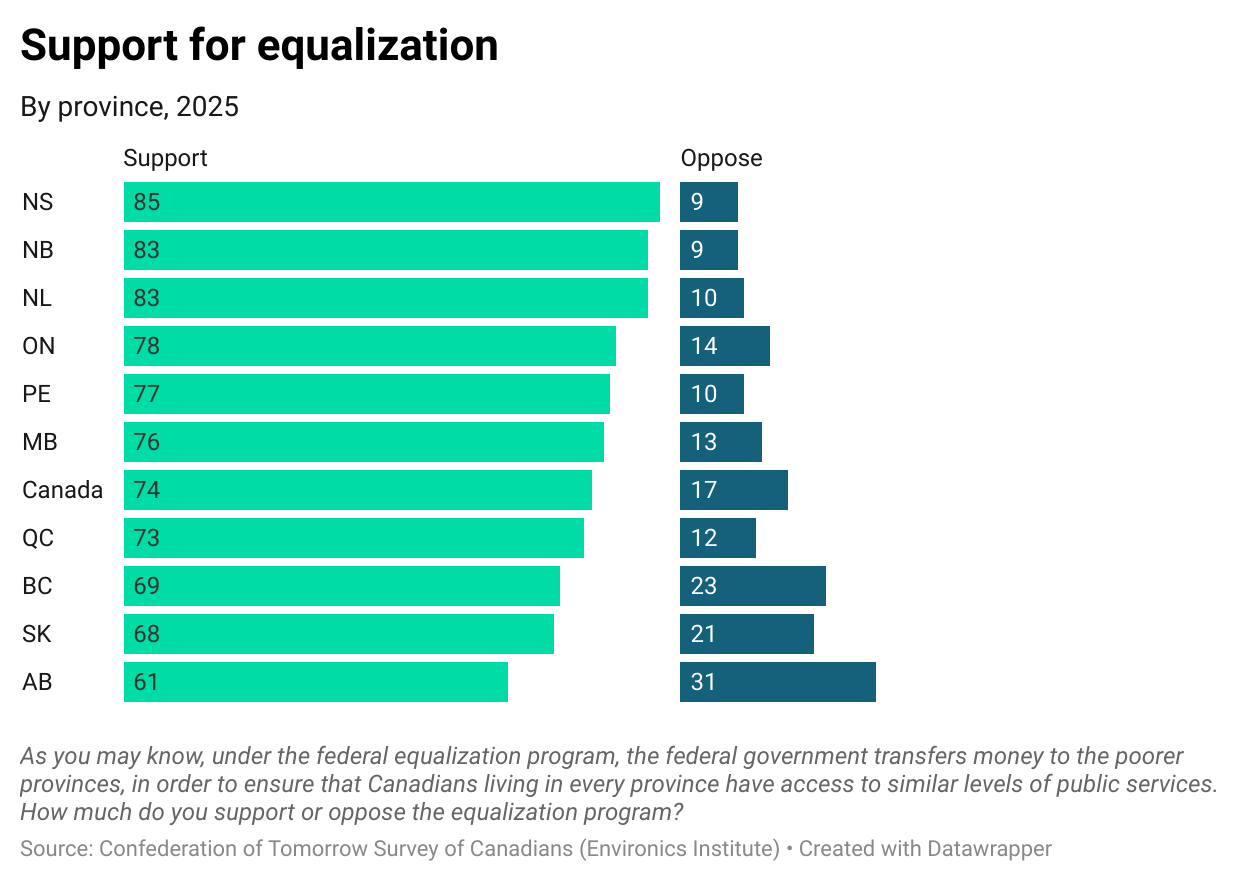
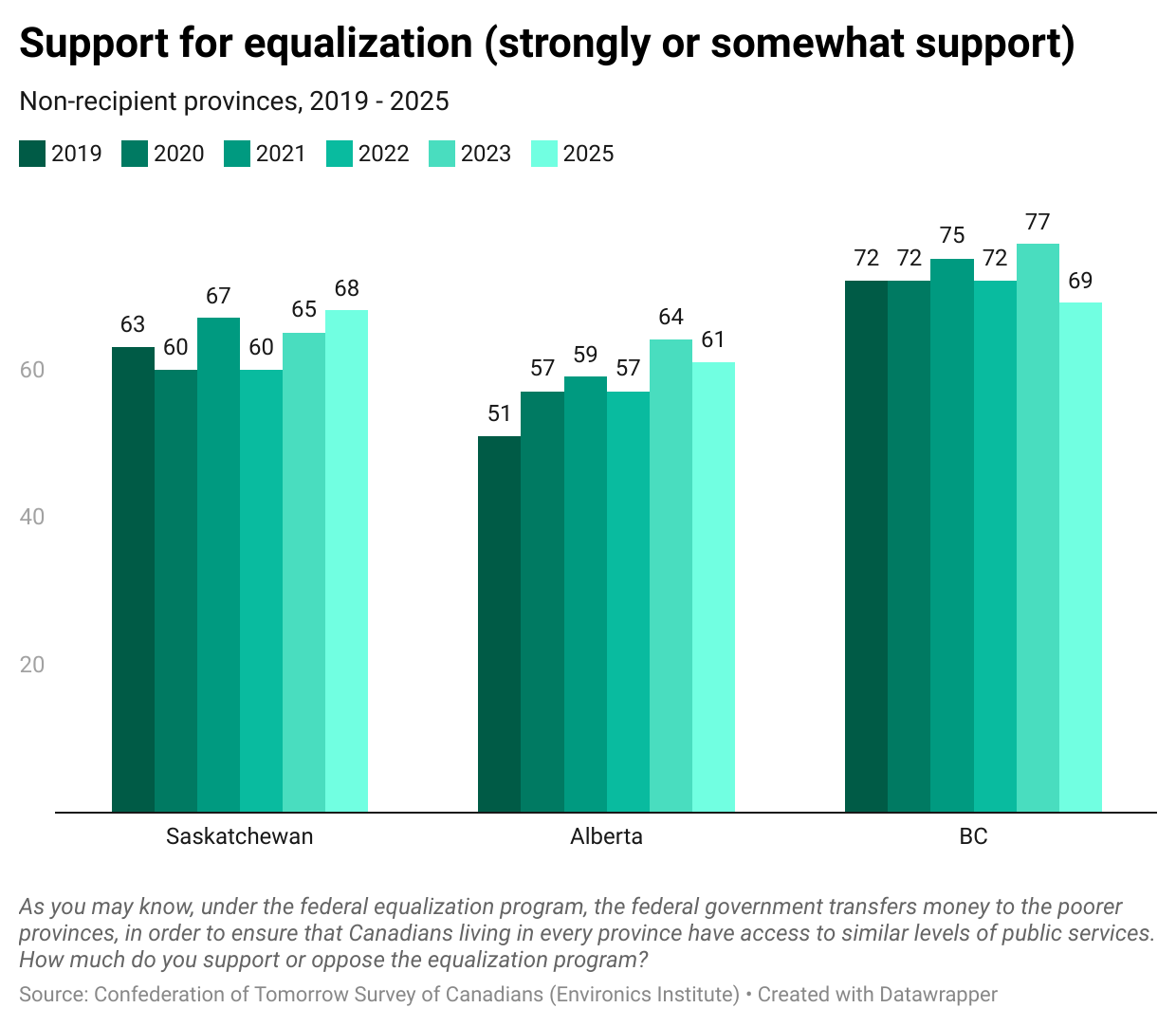
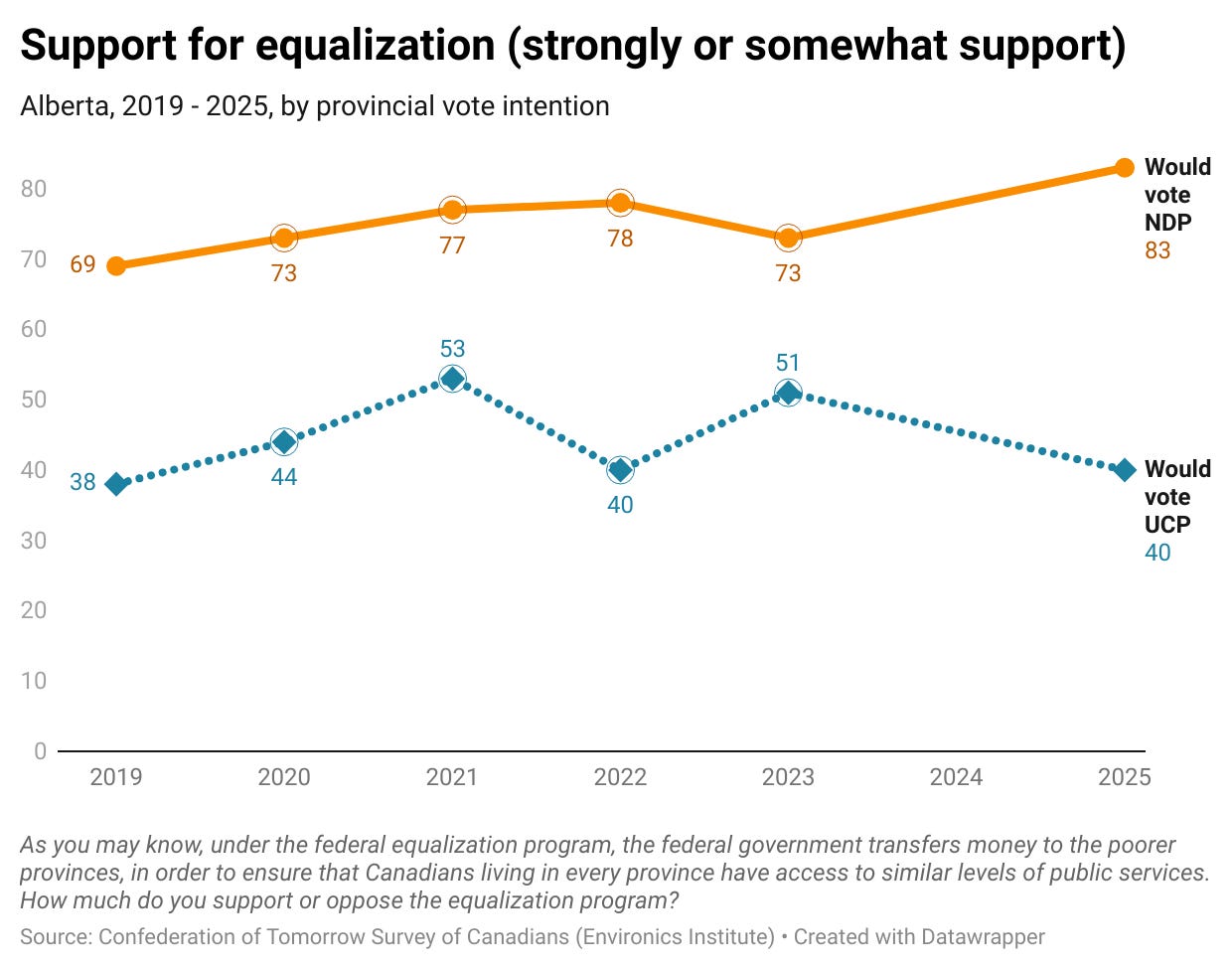
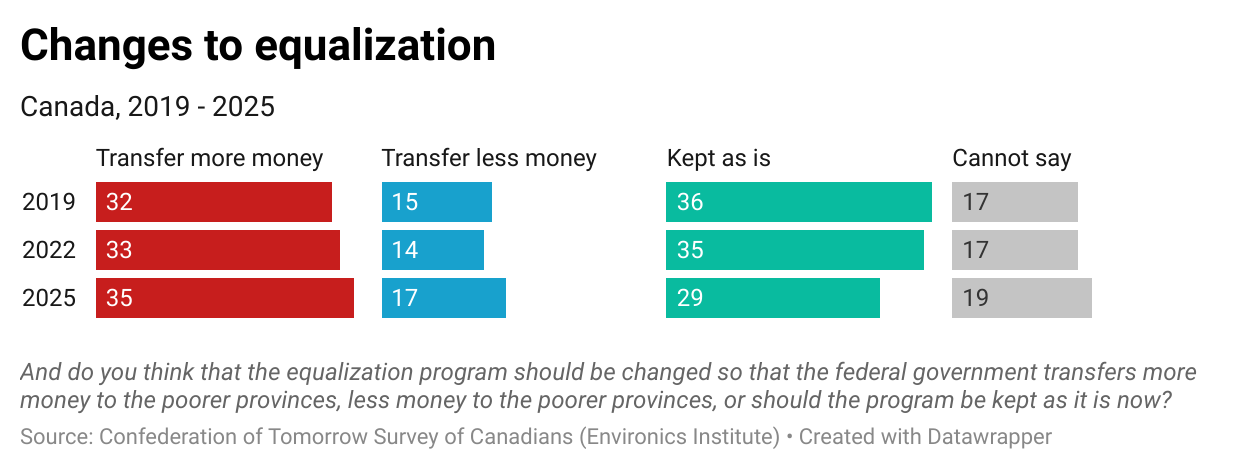
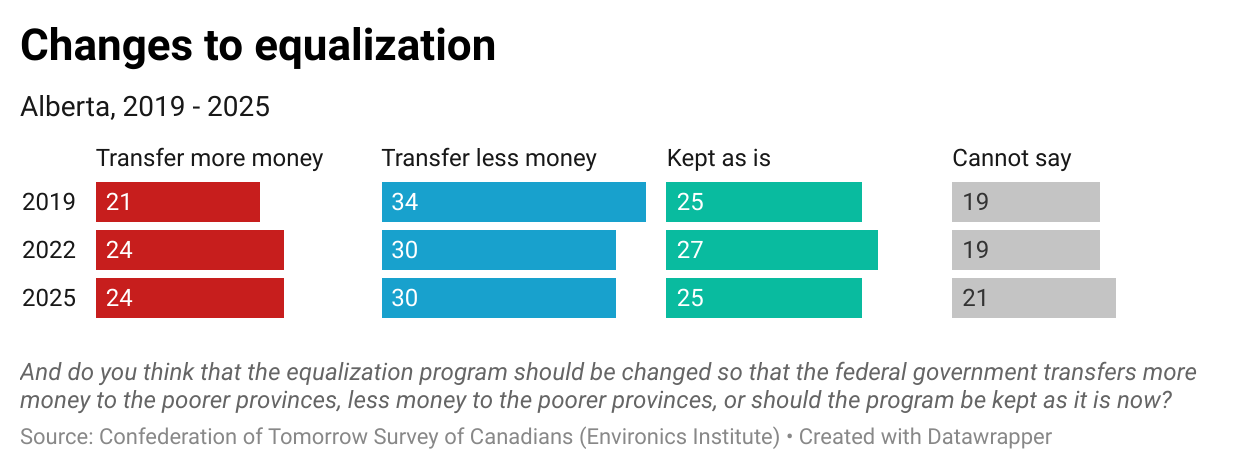
It could illuminate further if we could understand how those responding to the question understand what equalization entails. The word ‘transfer’, for example, can lead to the belief that people in Alberta pay more in taxes compared to those in other provinces earning the same amount as they do, precisely so the federal government can give ‘their’ money to people in other provinces. Such a perception immediately generates a feeling of unfairness, which does not exist, or at least not in the way they think.
A person can still come away feeling that equalization is unfair because they would prefer that Alberta tax dollars remain to be spent in Alberta but it strikes me that this is more of a general “Alberta first” view of the world than a real opposition to equalization. I suspect it also marries up with a belief that the federal government has never and never will do anything for Alberta when that is not true.
Also, the description of equalization as a ‘federal’ program might also create problems. For example, it implies for some that this is something imposed by the federal government. Having something in a constitution which was the result of consultation with the provinces suggests this is more of a national program than a federal one, even though it is the government in Ottawa which operates it. On the other hand, this is likely a distinction too subtle for many to think about consciously.
Equalization is a lesser evil to so-called “economic nationalism,” where Ottawa imposes tariffs and subsidies to protect favored Laurentian industries, at least in my view. Both alternatives harm Westerners. But the payments preserve more freedom and autonomy. And, they cost less for the subsidy from west to east. Also, perhaps, equalization payments could be conditioned (mended not ended) to encourage the eastern provinces to reform themselves to improve their economics.